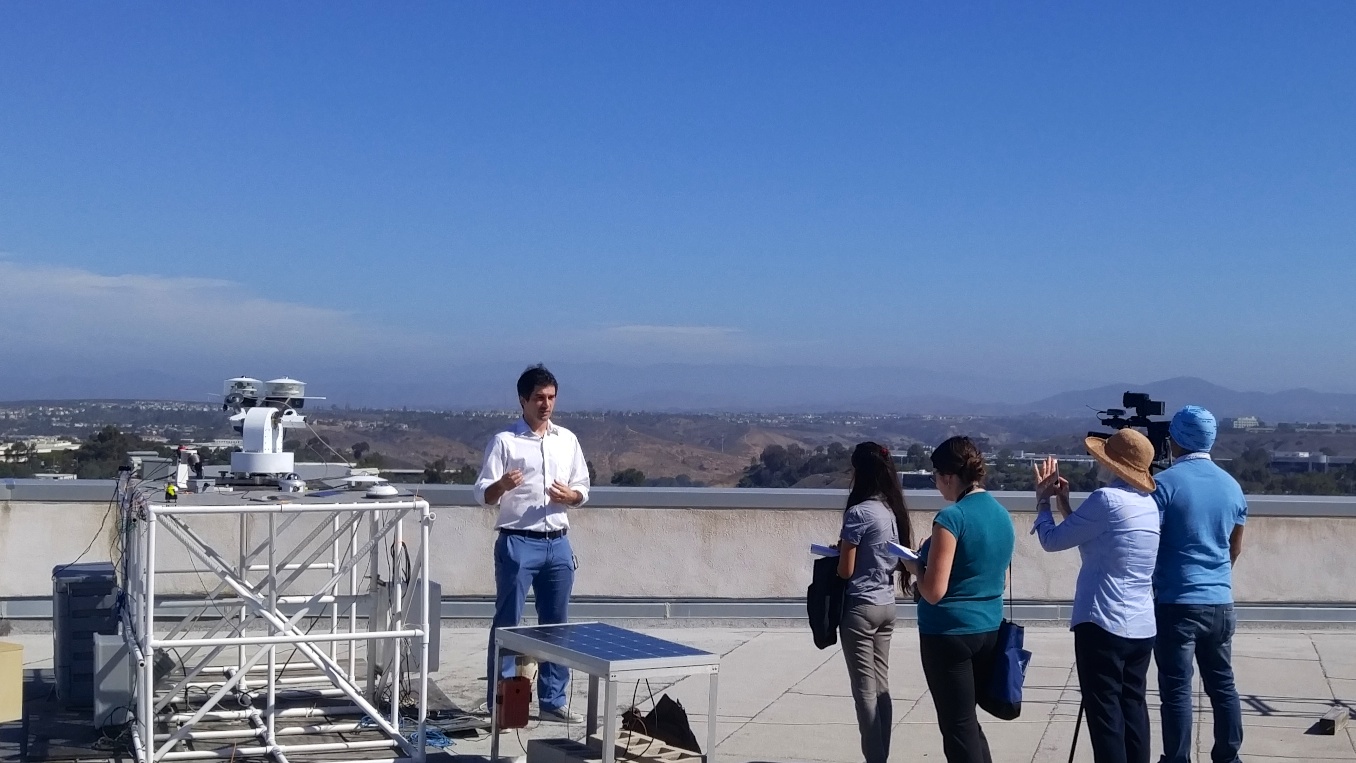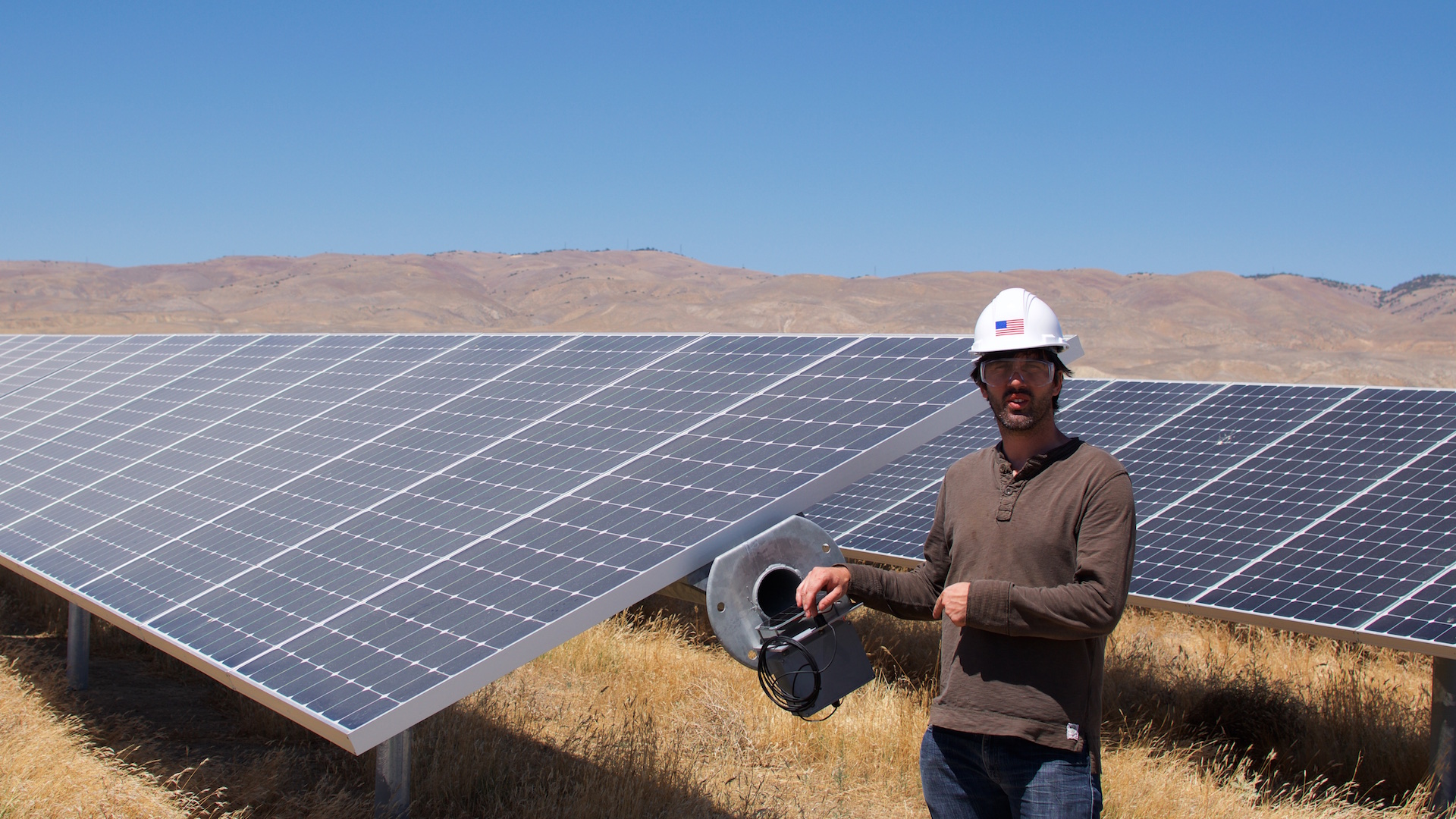CER Spotlight: Hugo Pedro
Assistant Project Scientist, Coimbra Energy Group
Quick Fun Facts:
Hobbies:
I love to watch and play soccer. I also love to watch 80’s cartoons with my three-year-old son.
Favorite Music:
I love any type of music as long as it has a nice melody.
Favorite Literary Genre:
I enjoy reading history and science fiction. I often listen to audiobooks while biking to school.
Spotlight on Hugo:
 Can you describe your research?
Can you describe your research?My research deals with creating forecasting models to predict the power production from variable renewable sources, such as solar and wind. As these resources become more integrated in power grids, grid managers need to know ahead of time how much energy those renewables will produce so that electric supply and demand can be properly balanced. This research is very interdisciplinary. For some projects, the models are mostly based on machine learning tools that treat the underlying physics as a black box. In other projects, we actually try to model the atmosphere and predict wind and cloud patterns. In these cases, the research deals with some of the most complex and chaotic phenomena in nature, such as turbulence.
Tell us a bit about your path to get to your current position?
My path to UC San Diego started in a small village in Portugal. After finishing high-school, I got a degree in aerospace engineering from the Technical University of Lisbon. This was a big step for me, since I was the first member of my family to pursue a college degree. Aerospace engineering was very appealing to me, because it offered a blend of mechanical and electrical engineering, and even a little bit of computer science. Unfortunately, the aerospace sector in Portugal is quite limited, with few opportunities, so I chose to remain at the university as a researcher. At that time, the project leader started working at the University of Hawaii at Manoa and invited me to continue my education there. I spent 6 years in Hawaii pursuing a master’s and Ph.D. in mechanical engineering. After graduating in 2010, I joined the research group led by Professor Carlos Coimbra, first at UC Merced and then at UC San Diego.
What is a typical day at work like?
My typical day starts by monitoring several forecasting models we have running in real-time. Often times, there are issues to solve (data streams down, bad data, etc.) since real-world data can be quite messy. Then I prepare data and results for reporting back to the funding institutions. The majority of my time is spent designing and coding new models, training and testing them against real-world data, and then implementing them in real time. I also spend some time looking into the latest publications in my topic of research to see what my colleagues around the world are working on. Several Ph.D. students are in our research group, and we discuss their projects in order to figure out how to progress. A couple of months in the year, I put more effort in preparing proposals for new research that hopefully attracts funding from agencies such as the NSF, DOE or California Energy Commission.
What do you think a lay person with little to no scientific training might find most fascinating about your work?
Perhaps how difficult it is to actually predict the power generation from renewables even for very short time horizons. For instance, wind power is so variable that even sophisticated forecasting models have a hard time beating persistence (a model that assumes that the forecasted value is equal to the latest value measured) for horizons below one hour.
What are some of the challenges for researchers in your field? Forecasting of renewable generation has been indicated by electric grid managers as a key component for the integration of renewables into the grid. However, many of the best models that one can find in the literature are often not feasible in the real world. They may require data that is not available or they may be too computationally intensive. For instance, a very good model that predicts the exact value for the next 10 minutes, but takes 15 minutes to compute, is useless in the real world. In general, I think that some of the research in my area ignores these aspects, and becomes too “academic”, limiting its impact.
Forecasting of renewable generation has been indicated by electric grid managers as a key component for the integration of renewables into the grid. However, many of the best models that one can find in the literature are often not feasible in the real world. They may require data that is not available or they may be too computationally intensive. For instance, a very good model that predicts the exact value for the next 10 minutes, but takes 15 minutes to compute, is useless in the real world. In general, I think that some of the research in my area ignores these aspects, and becomes too “academic”, limiting its impact.
Another issue relates to benchmarking. Currently, it is difficult to properly rank different techniques in the world of renewable forecasting. This results from the fact that there is no unified validation framework. Not all researchers use the same performance metrics and, in fact, there is no consensus about the best set of metrics. Regarding my own day-to-day activities, the most frustrating moments usually deal the data necessary for my research: lack of data, bad quality of data, and challenges in establishing real-time data streams with the collaborating power plants. In general, data infrastructure is built for monitoring and reporting, and is not very amenable for real-time prediction algorithms where a few minutes of data latency can break a model.
What is something your colleagues might be surprised to know about you?
I love to cook, and often try to cook Portuguese food. I grew up in a small village where most people still farm, and my father even produces his own wine. I spent many summer breaks harvesting apples, corn, and grapes, and occasionally grape-stomping.
Do you have any advice for someone looking to get into your field?
My field is very interdisciplinary, so a strong background in physics, mathematics, and programming is essential. If you have the right tools, then all that matters is an inquiring mind and dedication.
However, mentoring and teamwork are very important for a successful career in research, so I recommend that you find a research group that interests you, become familiar with their research, and take any opportunity to collaborate with them.
